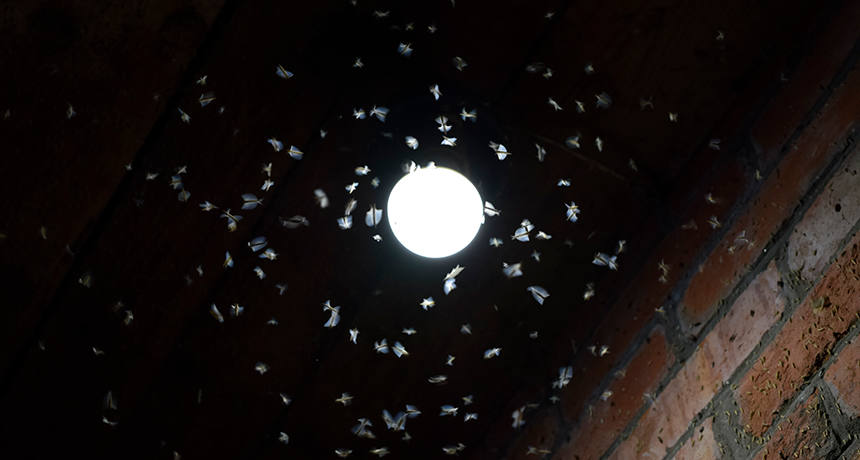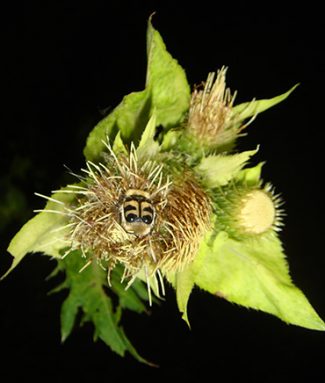Light pollution can foil plant-insect hookups
Upsetting nighttime pollinators can have daytime after-effects for some meadow flowers

Artificial light at night can distract insects away from plants they would otherwise pollinate. And the fallout of this disruption in pollination may spread into daylight hours, a new study finds.
fotogigi85/iStockphoto
By Susan Milius
Too much light at night can cut the number of seeds a plant makes, a new study finds.
Researchers put up street lights in Swiss meadows, far from any real streets. It looked pretty odd, but it was all for science. The setup mimicked urban light pollution. (That is artificial light at night.) In these now-light-polluted fields, flowers had 62 percent fewer night visitors — insect pollinators — than did the flowers in dark meadows.
The researchers reported their findings August 2 in Nature.

Cabbage thistles (Cirsium oleraceum) are the most common flowers in these meadows. Fewer insect visitors at night could mean less pollen hauled from plant to plant (the first step in making seeds). For the thistles, daytime pollinator visits didn’t make up for this loss at night, says Eva Knop. She is an ecologist at the University of Bern in Switzerland. Overall, night-lit plants produced one-eighth fewer seeds than did plants that got full nights of darkness.
Light pollution might shrink a whole network of plants and their pollinators, Knop and her colleagues now suggest.
Indeed, night pollination was not just a lonely business for a few special plants. There were lots of links between pollen hauls by night and by day. Plants with a lot of night visits were often very busy by day, too. Light at night that cuts seed numbers could over time mean fewer new plants. And fewer plants could mean less food and shelter for daytime insects. So a lot of pollinators working the day and night shifts could be effected, Knop worries.
More than eight in every 10 species of flowering plants get some help in making seeds from animals (usually insects). None evolved with light after sundown, other than from the moon and stars. “I hope people start to realize that it’s really something that changes the whole ecosystem,” Knop says.
The new study is the first to show how artificial light affects plants’ ability to make seeds, she says. The test is also unusual because it considers all kinds of insect pollinators instead of focusing only on, say, night-flying moths.
Peering through night-vision goggles
This experiment was not easy. Finding really dark sites in highly populated Europe was quite hard. Even harder was finding a dark site with electricity to plug in the street lights. Sites with no light pollution generally also have no power, Knop points out. She did not want to use movable electric generators. Their roars and smells might have messed up the results. So researchers painstakingly scouted sites near water-powered energy sources. They also used “really long cables,” she says.
To count insect visits, researchers walked a set path and caught any insects they saw wriggling on a flower. At dark sites, they tried to get data with as little light as possible. For half the walks, researchers wore small headlights. The other half were done — carefully — in full darkness. The team used night-vision goggles. Still, this didn’t give them a perfect view, Knop notes. The goggles give only a flat view of the world. There’s no sense of how near or far something is. With that kind of view, it’s “not that easy to catch insects,” she says.
The researchers paid special attention to the cabbage thistle. But they also mapped which kinds of insects visited other plants by day or night.
The idea that light at night matters to daytime pollinators is still a hypothesis at this point, says Darren Evans. He is an ecologist at Newcastle University in England. He also studies light pollution and pollination. The risk of light spillover at night is important, he notes, and scientists need to pay attention to it.







